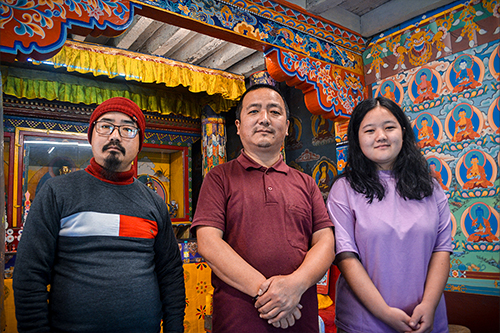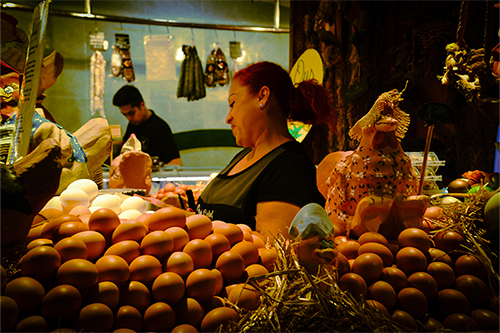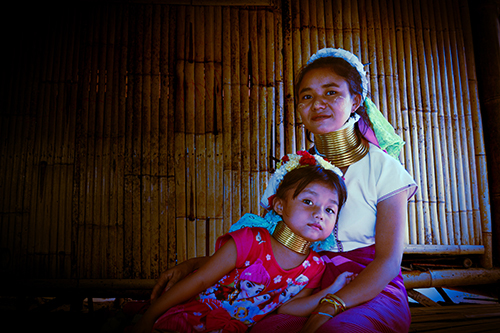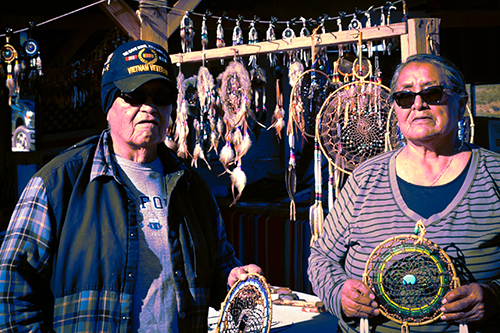

If “time is money”, then it is an acknowledgement that the most precious commodity money buys, is time. Many express themselves as individuals even as they make a living either by moonlighting or using their leisure time creatively. If the pursuit of money robs one of their expression, then the value of having money is certainly diminished. A young couple running a gallery in Malasana, Madrid, was considering giving up their gallery space as it was becoming financially non-viable. Their job was to uphold culture, and the economy was not complying with their pursuit.
As people continue to move away from land, engaging less in subsistence living, sustenance at a grass root level deserves to be looked at. I like to get to know people inhabiting different parts of the world, engaged at a base level of sustenance yet at a high level of social or cultural status. Some of the communities, receive financial support from the government and other organizations, yet their well being rests on self-reliability working within a functional infrastructure and a supportive and relatively homogeneous community.
Social science research has long suggested that the model of the rational, utility-maximizing homo economicus fails to capture how individuals respond to monetary incentives. Money can lead to decreased motivation. [i] In one of the most famous examples, Richard Titmuss argued that paying blood donors could actually decrease blood supply.[ii] In another study, Uri Gneezy and Aldo Rustichini found that imposing a monetary fine on parents who were tardy in picking up their children from daycare resulted in more late arrivals.[iii] Indeed, when a contract specifies fines or damages, individuals have been shown to be more strategic and more willing to breach their contract.[iv]
The Monk with Daughter & Disciple

The Monk and his family lives humbly within the premises of the Thongsa Gompa monastery, the oldest Bhutanese monastery built in 1964 after the Bhutanese captured Kalimpong hills from the Chogyals of Sikkim on the Himalayas in India. His daughter attends university in another part of India, learning Chinese language and literature for the prospect of a sustainable future.
Practicing Buddhists make five promises – not to lie, not to steal, not to engage in sexual misconduct, not to harm any living creature and not to take intoxicating substances which lead to carelessness. These are called The 5 Precepts. Additionally, they are also expected to let go of their attachments to all social conventions. The same practice was done by Buddha on his path to enlightenment – Nirvana.
To Buddhists as also some economists, money counts as a social convention. Hence the custom is to depend on the community they serve for their sustenance. The lay community provides the money and the labor to build shelter for monks, make them clothes and buy them the technology they need to keep up with the world outside the monastery, from computers to iPads.
The irreplaceable role that temples once played as a community’s spiritual core–acting as schools, medical clinics, nursing homes, administrative offices and recreational centers–has diminished. Now, although some aspects of the faith are thriving, mainstream Buddhism is struggling to maintain its economic foundation and its moral and spiritual authority.
The Egg Lady

Raising chicken, selling eggs is a low cost means of raising capital for yet more chicken and more eggs. Food is a multimillion-dollar industry that attracts tourism to countries worldwide. Food brings people together. Food is a creative process that the people dining partake in by appreciating the food and the culture.
Mass production or robotized production of certain foods, already in practice are not only robbing kitchens of sous chefs, but it is also taking away from the creative process that was found in something that was hand made with techniques perfected with practice and the love of cooking.
A home-grown chicken pen might only produce enough eggs to sell for the day at the market as opposed to an industrial poultry, but the quality and taste are both inferior. Our subject sells at La Boqueria a famous market in the center of Barcelona, which is more a cultural mecca than market. The merchants engage in conversations with buyers and other merchants, that makes La Boqueria a lively energetic place with a plethora of gastronomic delights.
The Kayan Mother

The Kayan tribe in northern Thailand has a custom where some women wear rings to stretch out their neck over the years. The neck attains a greater length over the years, losing its capacity to hold the weight of the head unassisted by these metal rings, on the event that these rings are removed.
It is said the neck rings prevented bites from tigers. There is no such threat today, yet the women themselves say it is to distinguish their cultural identity. The women wear the coils, which are made by Burmese craftsmen, from childhood, starting with four or five rings and adding more each year as they grow accustomed to the bruising and discomfort caused by the weight on their collar bones. They sleep in them and pad their necks with leaves to prevent chafing and sores.
This exotic tradition inspired the creation of tourism villages in 1985. Thai authorities refuse to allow Kayans to resettle outside tourist villages, claiming they are economic migrants and not real refugees from Myanmar. Trapped in an antiquated tradition, the women continue to showcase themselves at a tourist destination in Thailand.
The Dream Makers

A Cherokee child born today stands to receive at least $168,000 when he or she turns 18. The tribe pays for financial training classes for both high school students and adults. It is not a requirement that tribal members drawing checks live on the reservation, though approximately 10,000 do. Those that leave the reservation, assimilate with mainstream, eventually relinquishing their cultural inheritance. Culture inside the reservation holds little outside of the making of arts and crafts, clothing, and pottery. Many of which are also mass produced in China and available at a fraction of the cost.
The Indian Trust balance sits at over $634 million. Tribal Council resolution, 2016 approved division of Minors Fund payments into blocks. Starting in June 2017, the EBCI began releasing $25,000 to individuals when they turned 18, another $25,000 when they turned 21, and the remainder of the fund when they turned 25. Funding received in full amounts was not used effectively for education and livelihood of minors, instead was often squandered away in drinking and gambling by parents.
These dollar amounts are easily misinterpreted. Records showing utilization of funds is fuzzy at best. Contrary to popular belief, an Indian born do not go to college for free. Schools in most of the reservations have sub-par quality of education making many students drop out or unable to receive a proper education when they graduate school. The U.S. government officially recognizes 574 Indian tribes in the contiguous 48 states and Alaska. These federally recognized tribes are eligible for funding and services from the Bureau of Indian Affairs, either directly or through contracts, grants, or compacts.
Members of some Native American tribes receive cash payouts from gaming revenue. The Santa Ynez Band of Chumash Indians, for example, has paid its members $30,000 per month from casino earnings. Other tribes send out more modest annual checks of $1,000 or less. The deeply inadequate plight of the reservations remains a standing example of the limitations of the currency mechanics. Stripped of their land and indigenous culture, money is a poor compensation for these people.
At a subsistence level, assistance from organizations should take into consideration societal responses to monetary incentives. As a policy matter, efforts to shift money norms should show sensitivity to the complex psychological and emotional forces at play. Individuals do not behave rationally when it comes to money, so the law should not assume rationality in designing incentive structures. Instead, a values-based approach that works to elicit intrinsic motivation to comply with, and enforce, money norms offer more promise.
[i] EDWARD L. DECI & RICHARD M. RYAN, INTRINSIC MOTIVATION AND SELFDETERMINATION IN HUMAN BEHAVIOR 1 (1985); EDWARD L. DECI, INTRINSIC MOTIVATION 1 (1975); BRUNO FREY, NOT JUST FOR MONEY, AN ECONOMIC THEORY OF PERSONAL MOTIVATION 1 (1997); Bruno S. Frey & Reto Jegen, Motivation Crowding Theory, 15 J. ECON. SURV. 589, 589 (2001); Bruno S. Frey & Lorenz Goette, Does Pay Motivate Volunteers? (Institute for Empirical Research in Economics, University of Zurich, Working Paper No. 007, 1999). 8. RICHARD TITMUSS, THE GIFT RELATIONSHIP: FROM HUMAN BLOOD TO SOCIAL POLICY 1 (1971).
[ii] RICHARD TITMUSS, THE GIFT RELATIONSHIP: FROM HUMAN BLOOD TO SOCIAL POLICY 1 (1971).
[iii] Uri Gneezy & Aldo Rustichini, A Fine is a Price, 29 J. LEG. STUD. 1, 1 (2000) [hereinafter “Gneezy & Rustichini, A Fine is a Price”].
[iv] Tess Wilkinson-Ryan, Do Liquidated Damages Encourage Breach? A Psychological Experiment, 108 MICH. L. REV. 633, 636 (2010) (offering experimental evidence that parties are more willing to breach contracts with liquidated damages clauses)
